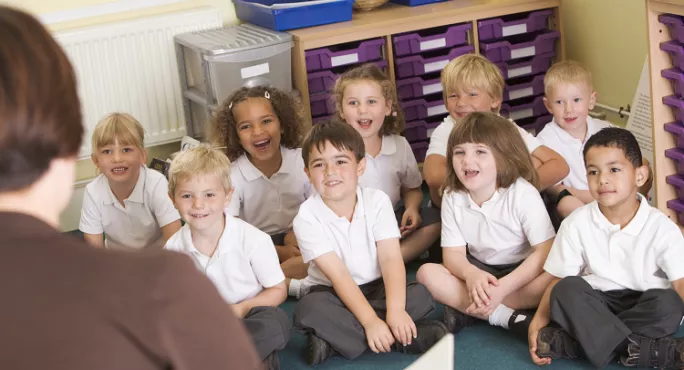‘I signed up to teach - not sacrifice my health’

Head lice, scabies and threadworm are a few of the accepted occupational hazards that come with the territory for teachers. But now it seems that serious illness - or even death - should be added to the list.
What is particularly shocking is this idea that teachers are somehow lacking in commitment if they’re not willing to lay down their lives in service. This has come most recently from Sir Michael Wilshaw: a man who has spent a lot of time in schools, and therefore should know better.
However, it seems that former Ofsted chief inspectors are not alone in their expectation that teachers should just be brave little soldiers. Many headlines over the past year have called for teachers to stop being cowardly and get back into the classroom.
Most have missed the point that: a) many teachers are still in classrooms across the country, with key worker children and vulnerable children; and b) teachers didn’t make the decision to restrict entry to schools. This decision was made by the government, when faced with the very real possibility of hospitals being overwhelmed.
Schools reopening: For primary teachers...no change at all
The so-called Big Bang wider opening of schools on Monday 8 March will see 10 million people, from millions of different households, suddenly being thrown back together. Surely the government has put additional safety measures into place? Well, yes and no.
From next Monday, teachers in secondary schools will see a change in policy concerning face masks - which should now be worn by staff and students alike at all times, other than during PE, if people are unable to socially distance. The word “should” is key here, however.
An additional measure to be introduced in secondary schools is the regular testing of pupils for Covid. Although this is strongly encouraged by the government, it is, again, voluntary.
Teachers in primary schools can expect…nothing. No change. We’ve been told that it is too damaging to the mental health of younger children to wear masks - yet children as young as 3 wear masks in other parts of the world. (I’m not advocating for three-year-olds to wear masks.)
We’ve been assured that opening windows is more effective than wearing masks, anyway. In that case, why are we wearing them everywhere else - including in communal areas in primary schools?
I’ve had my classroom windows open since the beginning of the pandemic, and you won’t be surprised to hear that that hasn’t stopped staff and children testing positive for Covid. If opening windows is all that is needed, masks wouldn’t be worn in other workplaces, and the numbers of people in a space limited.
Teachers are not gallivanting around
It’s actually insulting that this gaslighting is continuing when there is clear evidence that the virus is transmitted by children as well as adults. Rather than addressing this, the government has spent goodness knows how much on a propaganda campaign telling parents how safe schools are.
The other day, I was sitting quietly, doing my cross-stitch while listening to Classic FM. But I had to turn the radio off after two adverts in 20 minutes, both about the “safe return” to schools. The one that really tipped me over the edge was the primary headteacher saying that we’re using lateral flow tests to “stop Covid getting into the classroom”.
Obviously, I can’t speak for other teachers, but I have been nowhere and seen no one since lockdown began. The implication that teachers are gallivanting around - and then bringing Covid into school - is highly insulting.
In middle schools, of course, where they have pupils from Year 5 to Year 8 in the same building, staff are expected to work in different conditions, depending on which part of the building they are in. This clearly shows the absolute absurdity of the situation. How can the virus behave any differently in a different setting?
Another contradiction seems to be that there is now medical acceptance of the wider list of Covid symptoms, beyond a cough, a temperature and loss of taste. However, guidance to schools says that we cannot insist on children staying away from school for 10 days if they present with these wider symptoms.
The symptoms include: diarrhoea, a persistent headache, fever and chills, shortness of breath or difficulty breathing, fatigue, muscle or body aches, sore throat, congestion or runny nose, nausea or vomiting.
This seems a very strange move, indeed, and one can only wonder whether the idea of teachers having to sacrifice their lives is not so far-fetched after all.
I’m looking forward to having all of my class back in school, but I’m angry that there is an expectation that I should be willing to sacrifice my life (or those of close family members) in the line of duty. I signed up to educate children, not die for my country.
Laura Baxter is a curriculum leader at a primary school in Birkenhead
You need a Tes subscription to read this article
Subscribe now to read this article and get other subscriber-only content:
- Unlimited access to all Tes magazine content
- Exclusive subscriber-only stories
- Award-winning email newsletters
Already a subscriber? Log in
You need a subscription to read this article
Subscribe now to read this article and get other subscriber-only content, including:
- Unlimited access to all Tes magazine content
- Exclusive subscriber-only stories
- Award-winning email newsletters